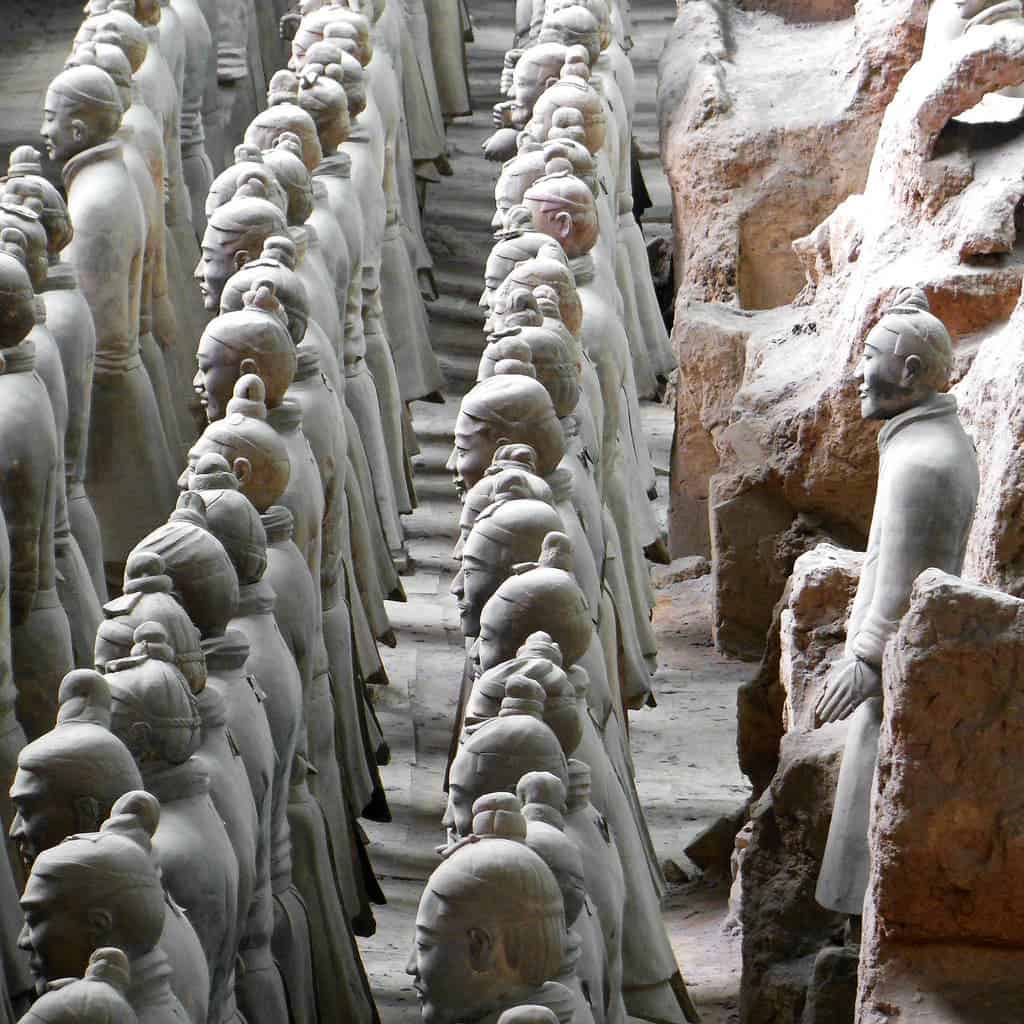Ancient Chinese sculptors may have gotten some help from the Greeks when making their world-famous Terracotta Army, new archaeological work has surprisingly found.

In 221BC Ying Zheng, a prince from the state of the Qin, became the first man to unify ancient China, taking up the mantle of emperor. He became Qin Shi Huangdi, the First Emperor of Qin, and did a whole bunch of impressive stuff — he revolutionized the administration, expanded the empire, and began building the great wall — then died. He was entombed in a huge mortuary complex, watched over by some 8,000 lifelike terracotta soldiers.
And these soldiers look nothing like Chinese sculptures of the time. Now, a team of archeologists working in the Xinjiang province discovered European DNA at several sites in the region from the time of the First Emperor in the Third Century BC and the sudden appearance of life-sized, highly detailed statues — like those the ancient Greeks. This, they say, could mean that ancient Greek artists traveled to the country to help design the famous landmark — marking European-Chinese ties a full 1,500 years earlier than Marco Polo’s historic trip.
The theory is that Chinese artists may have been influenced by the arrival of Greek statues in central Asia in the wake of Alexander the Great’s incursion through India. There’s also speculation that Greek artists could have been present when the Terracotta Army was made, either teaching others or helping themselves. Other evidence of ties to Greece came from several bronze figurines of birds found at the site — which were cast with a lost wax method known in ancient Greece and Egipt.
But, what strikes archeologists the most is the intricacy of the sculptures. Ancient Greece was the place to be for sculptors — where previous sculptures were stylized, rough cuts, the Greek statues flowed. Just look at the figures carved on the Pantheon. Even our most famous works today, such as Michelangelo’s David, were made by Renaissance artists re-using ancient Greek techniques. Dr Li Xiuzhen, senior archaeologist at the tomb’s museum, believes Greek art had a role to play in China, over 7,000 km away.
“We now have evidence that close contact existed between the First Emperor’s China and the West before the formal opening of the Silk Road,” he said. “This is far earlier than we formerly thought.”
“We now think the Terracotta Army, the acrobats and the bronze sculptures found on site have been inspired by ancient Greek sculptures and art.”
“I imagine that a Greek sculptor may have been at the site to train the locals,” said Professor Lukas Nickel, chair of Asian art history at Vienna University.
Excavations at the site also revealed traces of European mitochondrial DNA, showing that they settled and died in the area during the time of the First Emperor or even before.
“The archaeological work undertaken here recently is more important than anything in the last 40 years,” added Professor Zhang Weixing, lead archaeologist at the tomb site. “By systematically examining the First Emperor’s main tomb and subsidiary burials we have discovered something more important even than the Terracotta Army.”
The findings will be presented in a National Geographic and BBC Two documentary “The Greatest Tomb on Earth: Secrets of Ancient China,” which will be shown on Sunday 16th on BBC Two.






